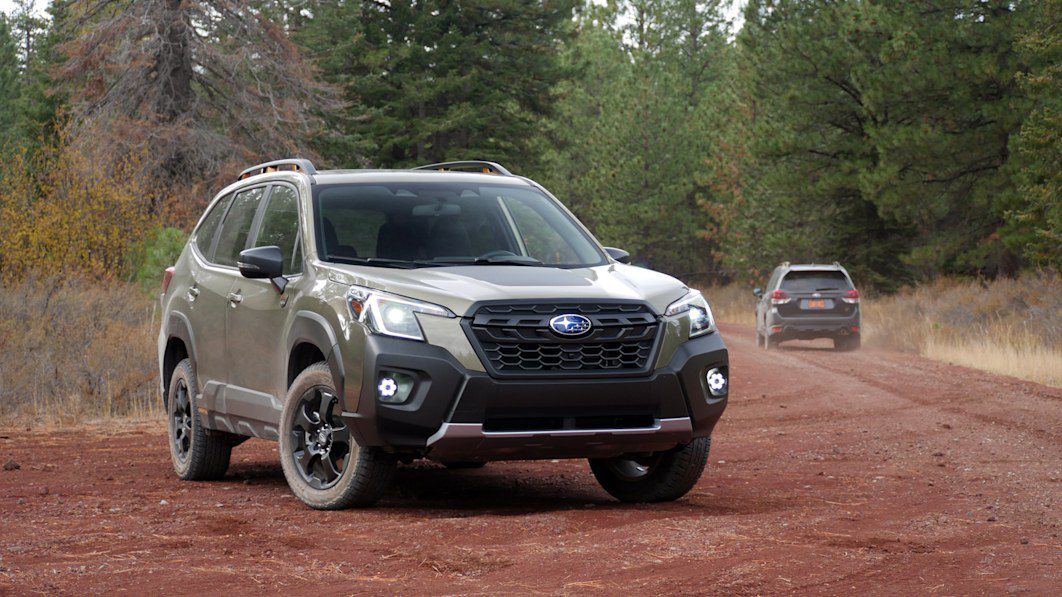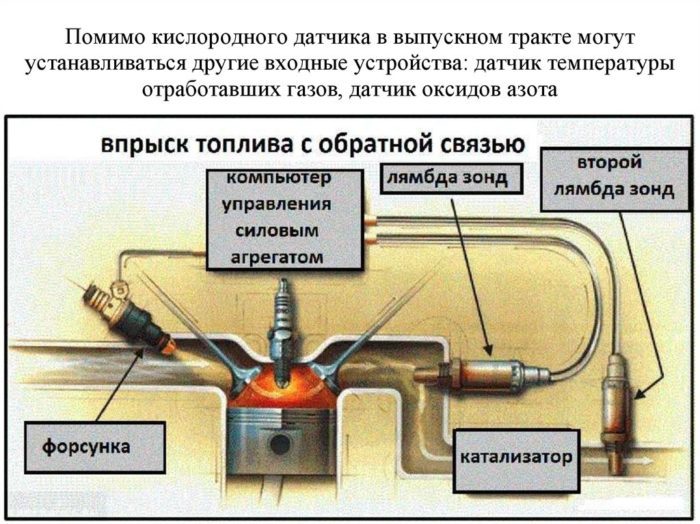
Subaru Forester 2022 review
Content
- Does it represent good value for money? What functions does it have? 9/10
- Is there anything interesting about its design? 7/10
- How practical is the interior space? 9/10
- What are the main characteristics of the engine and transmission? 7/10
- What is it like to drive? 8/10
- How much fuel does it consume? 7/10
- What safety equipment is installed? What is the safety rating? 9/10
- How much does it cost to own? What kind of guarantee is provided? 8/10
- Verdict
The Subaru Forester is a famous SUV that most people probably consider to be pretty good because it's been around for a long time and there are a lot of them, so it must be doing something right.
But now there are so many mid-size SUVs like the Kia Sportage, Hyundai Tucson and Mazda CX-5. So, what is the truth about the Subaru Forester? Is it a good value? What is it like to drive? How safe is it?
Well, the new one just arrived and I have the answers to these questions and more.
Subaru Forester is a famous SUV. (Image: Richard Berry)
| Subaru Forester 2022: 2.5I (XNUMXWD) | |
|---|---|
| Safety Rating | |
| engine's type | 2.5L |
| fuel type | Regular unleaded gasoline |
| Fuel efficiency | 7.4l / 100km |
| Landing | 5 Places |
| Price from | $35,990 |
Does it represent good value for money? What functions does it have? 9/10
Look, I don't want to lose you at the start of this review, but the next few paragraphs are going to sound like gibberish, and I blame Subaru for giving individual classes in the Forester line unimaginable names. But it's worth staying, because I can tell you straight up that the Forester is now a good price, a really good price...
The entry level in the Forester lineup is called the 2.5i, which costs $35,990 and comes with dual-zone climate control, an eight-inch touchscreen media with Apple CarPlay and Android Auto, a 6.3-inch display for vehicle information, and a smaller 4.2-inch screen in the instrument cluster. , cloth seats, proximity key with start button, as well as tinted rear windows, LED headlights and daytime running lights, and 17-inch alloy wheels.
The next class is the $2.5 38,390iL, and to be honest, it's identical to the 2.5i except for one very important difference - it's equipped with safer technology. If it was my money, I would skip the entry level and go straight to 2.5iL. Oh, and it also comes with heated seats.
Forester is worth the money. (Image: Richard Berry)
The 2.5i Premium is next up at $41,140 and comes with all the features of the classes below, but adds 18-inch alloy wheels, premium cloth seats, sat-nav, power front seats, and a power tailgate.
Hold on, we're almost done with this.
The $2.5 42,690i Sport has Premium features but has 18-inch black metal trim wheels, orange exterior and interior trim accents, water-repellent fabric seats, and a power sunroof.
The 2.5iS is the fanciest class in the $44,190 range, which is the one I tested in the video at the beginning of this review. Along with all the low-end features, there are also silver 18-inch alloy wheels, leather seats, an eight-speaker Harman Kardon stereo and X-Mode, an off-road system for playing in the mud.
Finally, there are two hybrid classes - the $41,390 Hybrid L, whose feature list reflects 2.5iL, and the $47,190 Hybrid S, which has nearly the same standard features as the 2.5iS.
Is there anything interesting about its design? 7/10
This generation of Forester hit the world in 2018, and now Subaru says it has transformed the midsize SUV. A generation typically lasts around seven years, so 2022 is halfway there, but as far as transformation goes, the change comes from the transformation of reality TV.
The difference is really visible in the design of the headlights. This new Forester now has headlights with a more pronounced LED brow. Subaru also says the grille, bumpers and fog lights have been restyled, though I hardly see it. When Subaru's PR team says the changes are "invisible," you can be sure they're extremely minimal.
In this way, the Forester retains its distinctive boxy, rugged appearance, which, while not all that pretty in my opinion, gives the SUV a capable and practical look that its competitors don't. I mean, the new Kia Sportage is stunning with its intriguing design, but it looks dirt-averse, just like the Mazda CX-5, which prioritizes form over function.
No, the Forester looks like it should be on the shelf in an adventure store, complete with carabiners and hiking boots. I like it.
The Forester retains its characteristic boxy, rugged look. (Image: Richard Berry)
The Forester that stands out the most in the lineup is the 2.5i Sport. This sporty package was added a couple of years ago and features bright orange stripes along the side skirts and the same Dayglo trim in the cabin.
Speaking of the Forester's cabin, it's a luxurious place with a premium feel, and the 2.5iS I've driven had layer upon layer of different materials on the dashboard with textures ranging from mesh rubber to soft stitched leather upholstery.
The cabin isn't as modern as newer SUVs like the Sportage, and there's a busy feel to the design that's a bit cramped and confusing with all of its buttons, screens, and icons, but owners will quickly get used to it.
At 4640mm, the Forester is about a thumb length shorter than the Kia Sportage. A more interesting dimension is the Forester's ground clearance of 220mm, 40mm more than the Sportage, giving it better off-road capability. So, actually durable, not just a rugged look.
Forester is available in 10 colors including Crystal White, Crimson Red Pearl, Horizon Blue Pearl and Autumn Green Metallic.
How practical is the interior space? 9/10
It seems that Forester was created with practicality in mind. There are large doors that open very wide for easy entry and exit, plenty of rear passenger legroom even for me at 191cm tall, and a decent sized trunk with 498 liters (VDA) of luggage space to the trunk. That's more than the 477-litre boot of the Mitsubishi Outlander, but smaller than the 543-litre boot of the Sportage.
The boot volume is 498 liters (VDA). (Image: Richard Berry)
There is plenty of room inside thanks to massive door pockets, four cupholders (two in the back and two in the front) and a large storage box in the center console under the armrest. However, it could have been better - the hidden hole in front of the shifter, which is obviously designed for a phone, is too small for mine, and ever since I drove the new Toyota RAV4 with its innovative shelves cut into the dashboard, I'm surprised. why they are not on all cars and SUVs.
The Forester has more trunk space than the Mitsubishi Outlander. (Image: Richard Berry)
All Foresters have rear directional air vents, which is great, and combined with the tinted rear window and two USB ports in the second row, they mean kids in the back will be cool and able to charge their devices.
It looks like the Forester was built with practicality in mind. (Image: Richard Berry)
Touchless unlocking and push-button start means you don't have to reach for your keys, and that's also standard on all Foresters.
All Foresters are equipped with rear directional air vents. (Image: Richard Berry)
Finally, chunky roof racks are also available in every class, and you can buy crossbars (installed for $428.07) from Subaru's huge accessories department.
What are the main characteristics of the engine and transmission? 7/10
You can get the Forester with an inline petrol engine or a petrol-electric hybrid system.
The in-line petrol engine is a 2.5-cylinder four-cylinder engine with 136kW and 239Nm.
The inline petrol engine is a 2.5-cylinder four-cylinder engine. (Image: Richard Berry)
You may already know that Subaru uses "boxer" engines, which are rare in that the pistons move horizontally towards the ground rather than vertically up and down like most engines. The boxer setup has advantages, mainly the fact that it keeps the car's center of gravity low, which is good for stability.
The hybrid system combines a 2.0-liter four-cylinder petrol engine with 110 kW/196 Nm and an electric motor with 12.3 kW and 66 Nm.
Both powertrains use a continuously variable transmission (CVT), which is very smooth but makes acceleration sluggish.
What is it like to drive? 8/10
It is simply one of the best mid-size SUVs for the price. Yes, the CVT makes acceleration lackluster, but that's the only downside.
The ride is comfortable, the handling is good, the steering is on top. Excellent visibility, a superb ground clearance of 220mm and an excellent all-wheel drive system make the Forester hard to beat.
The trip is comfortable. (Image: Richard Berry)
I drove a 2.5iS with a 2.5 liter petrol engine. However, I've driven a Subaru hybrid before and can tell you that it tends to deliver more acceleration thanks to the extra and instantaneous electric torque.
Perhaps the only other negative was the brake pedal in my 2.5iS, which seemed to need a decent amount of pressure from me to get the Forester up quickly.
The traction force of the petrol Forester with brakes is 1800 kg, and the hybrid Forester is 1200 kg.
How much fuel does it consume? 7/10
According to the official ADR combined test, which aims to replicate the combination of open and city roads, the 2.5-liter petrol engine should consume 7.4 l/100 km, while the 2.0-liter petrol-electric Forester hybrid should consume 6.7 l/100 km.
My test of the 2.5L, which combined city driving as well as forays into dirt trails and back roads, came in at 12.5L/100km. So in the real world, the Forester - even its hybrid version - is not particularly economical.
Warranty and safety rating
Basic Warranty
5 years / unlimited mileage
guarantee
ANCAP Safety Rating
What safety equipment is installed? What is the safety rating? 9/10
How much does it cost to own? What kind of guarantee is provided? 8/10
The Forester is backed by a five-year, unlimited-mileage warranty. Maintenance is recommended at 12-month/12,500 km intervals and will cost $2400 over five years. It's quite expensive.
The hybrid battery is covered by an eight-year or 160,000 km warranty.
Verdict
The Forester is now one of the oldest SUVs among its competitors such as the Sportage, Tucson, Outlander and RAV4, but it's still the best to drive of the lot and has the best price.
Sure, it's not as modern and handsome as the Sportage, and it doesn't have a third row of seats like the Outlander, but the Forester is still practical and looks rugged.
